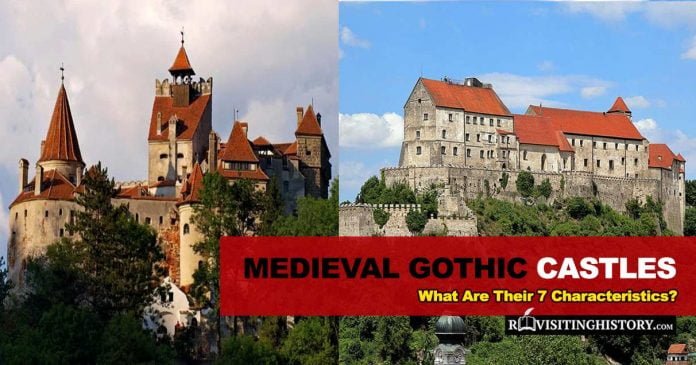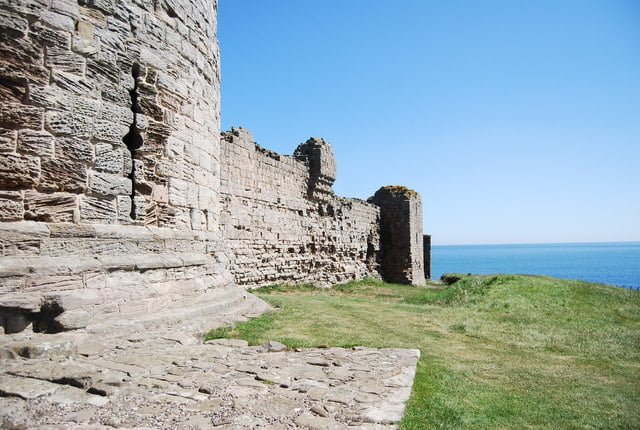Once you hear the words “Gothic,” “Medieval,” and “castle” strung together in a sentence, you’ll notice how your mind readily invokes the image of a tall, imposing building with lots of turrets and pointed arches. That’s how media has glamorized this style, but it’s definitely not the beginning nor the end of it.
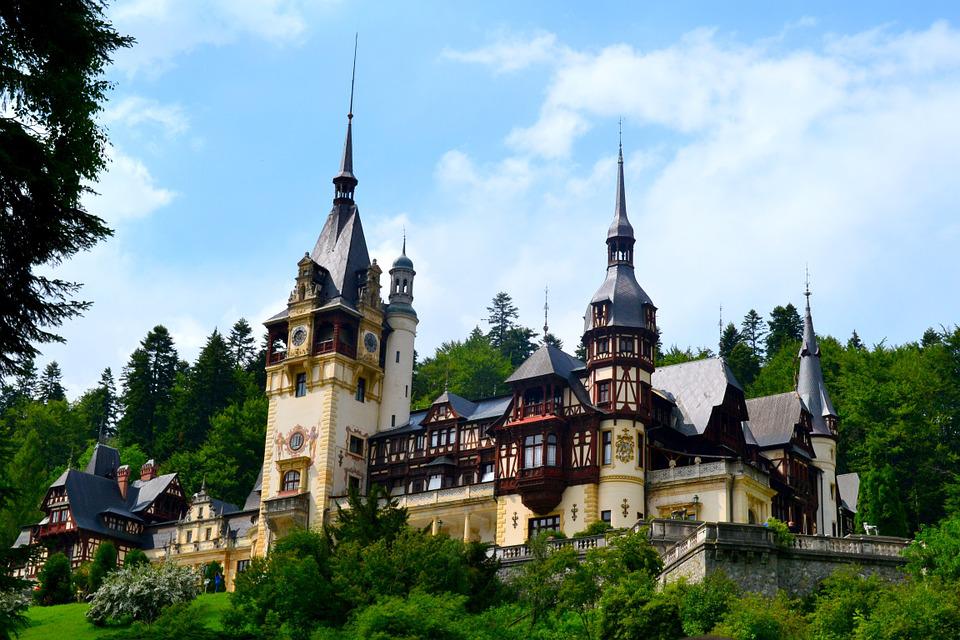
In fact, Gothic castle architecture is one of the most iconic building styles of the Middle Ages. It became quite prevalent from the 12th-16th centuries and was often mix-and-matched with other styles of the era for a transitional look at the end. Below, we’ll look at how this style originated and some of its most important characteristics.
Table of Contents
Origins of the Gothic Medieval Castle
The very first inklings of the Gothic style began in the 12th century while the power of the Catholic Church grew exponentially in Europe. With stable economies, there was a lot of “noble patronage” being focused on the construction sector. This led to the development of the Gothic style in small bits and pieces. As a result, this style is quite heavily ornamented.
It’s interesting to note that the Gothic style is a more evolved, ornamented version of its Romanesque predecessor and was mostly featured in churches and abbeys in the Middle Ages. Around the 16th century, the start of the Renaissance movement undermined the popularity of the Gothic style. It wasn’t until the 19th century that the “Gothic Revival” or “Neo-Gothic” movement began, giving this style a romantic comeback with some modern additions.
The Very Beginning
The first proper Gothic building is said to be the Abbey Church of Saint-Denis in France. It was actually a remodel sponsored by resident Abbot Suger in the 12th century, who wanted his undertaking to be graceful and visually harmonized. It was later used as a model by the future generation of designers who embraced the Gothic style. From stained glass windows to flying buttresses, there were a number of unique elements that were captured by master artists, sculptors, and designers in physical form.
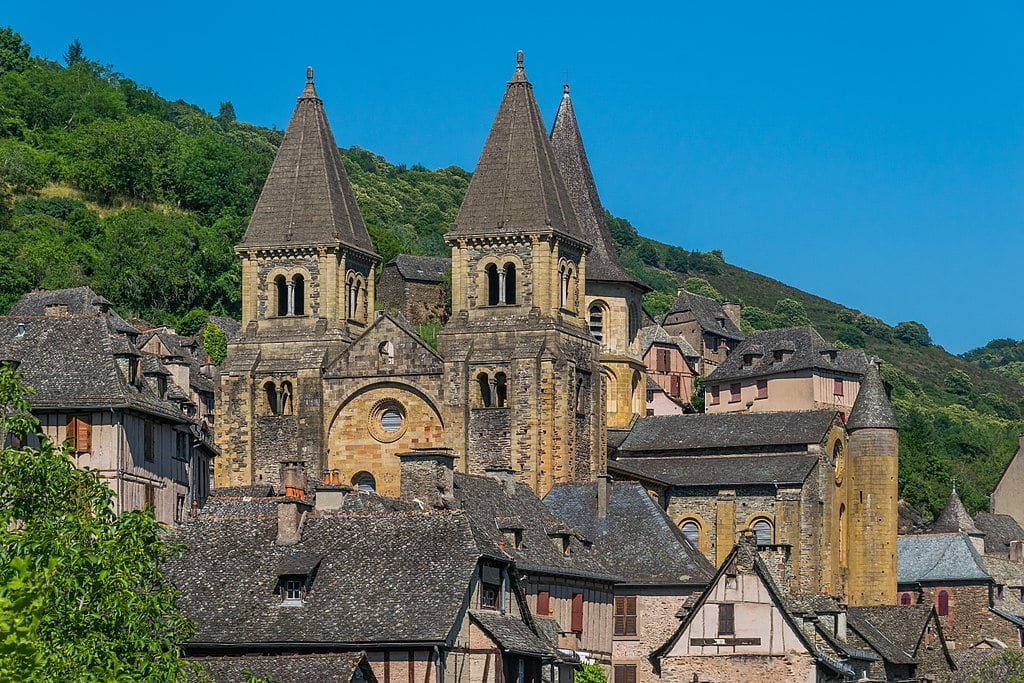
However, there’s a story behind each gothic castle element – i.e. where the inspiration came from. From Middle Eastern pointed arches to Romanesque barrel vaults and Byzantine buttresses, the High Gothic masters derived inspiration from various sources before combining them into a single building.
The critics of that era, however, were not as fascinated by the movement Suger started. While Suger himself termed his work as “modern”, his critics called it “gothic.” This was to say that they considered it barbaric and far away from their Roman ideals (the word derived from the “barbarian” Germanic Goth tribes). Today, however, experts consider the Gothic style the greatest achievement of the medieval civilization, as it allowed them to move away from the shadow of Rome and introduce something new of their own to the world.
7 Characteristics of the Gothic Castle Architecture
Now that we know when and where Gothic castle architecture originated, it’s time to look at its defining characteristics. Here they are:
1. Pointed Arches
Gothic architecture is known for being tall and elegant. But what exactly allows it to achieve this visual height? It’s the pointed arches. Not only are these the most prevalent features of the Gothic medieval castle, but they also highlighted a brand new engineering feat of the era.
Prior, the Romanesque-style buildings only used barrel arches, which had many structural set-backs – the most dominant of which is that most of the weight was distributed to the sides of the walls, which led to them requiring extremely thick construction that only allowed for very small windows, for structural stability.
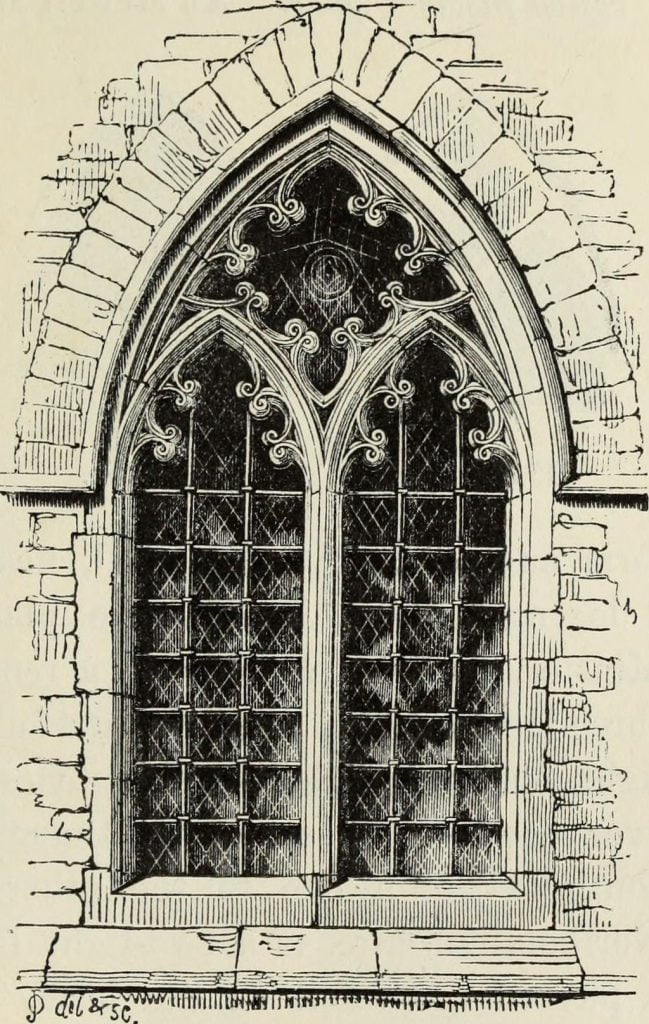
However, the pointed arch was narrower and as such, engineers were able to distribute the weight of the ceilings in a much more efficient manner, straight to the ground instead of onto the surrounding walls.
These arches weren’t just used to design the interior of Gothic castles but were also used in the design of windows, tracery, and doorways as well. It was a major decorative element and one of the most prominent characteristics of this style.
2. Ribbed vaults
The height of Gothic buildings can be attributed to the introduction of pointed vaulted arches.
For reference, a vault is basically an extension of the arch that leads to a single conjoining point on the ceiling. It’s made of masonry and was the basic structural setting for medieval-era buildings.
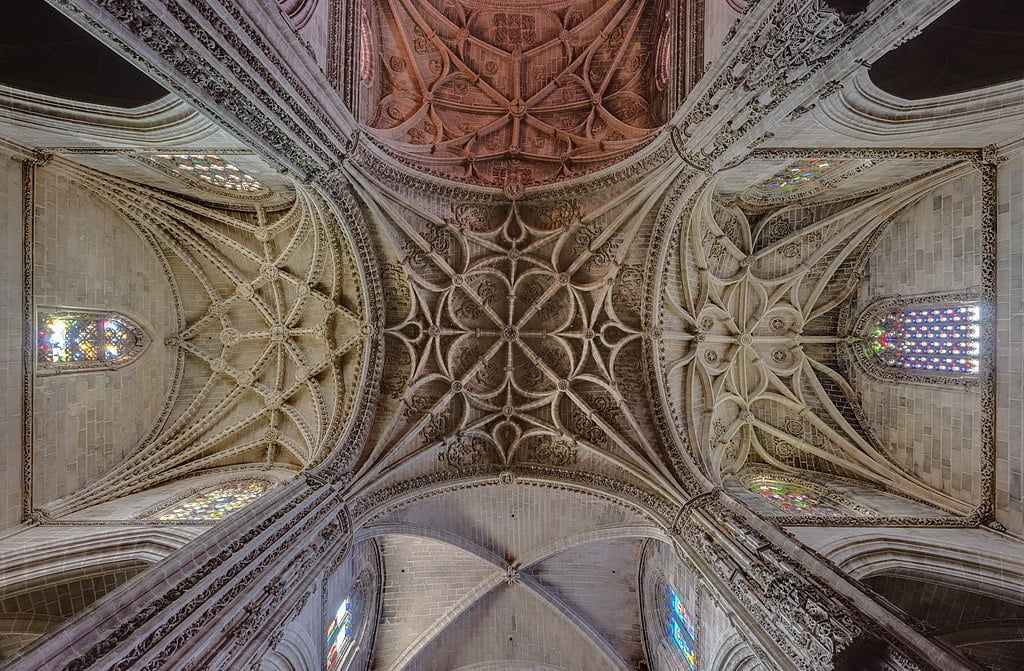
The Romanesque buildings saw extensive use of barrel vaults (an extension of round arches), which resulted in thicker walls and low ceiling heights. In contrast, the Gothic vaulted ceilings were called the “ribbed” vault. Since the base arch of this system was pointed, it resulted in fewer stress points, a more stable structure, taller ceiling heights, and thinner walls, which meant the windows could become larger and more stylistic.
Fun fact: the standard Gothic-style vault was made from four ribs, but like all things, it later evolved to have several other versions. There were the steller vaults with a star-shaped ribbed structure and even reticulated vaults which experimented with triangular and geometric vault styles. The most elaborate ones were the Rococo Gothic vaults with their incredible intertwining patterns and fan vaults with their fan-shaped ribs.
3. Tall columns
Columns are another distinct feature of Gothic medieval buildings. They were used to transfer the weight of the vaulted ceilings all the way to the floor. The earliest versions of these columns were alternated with thick piers for better structural support, but these were later replaced with “clustered” columns. These consisted of a single central column that was encompassed by smaller columns. Keeping in vein with the Gothic ornamentation, the tops of these columns frequently featured classic Corinthian-style detailing.
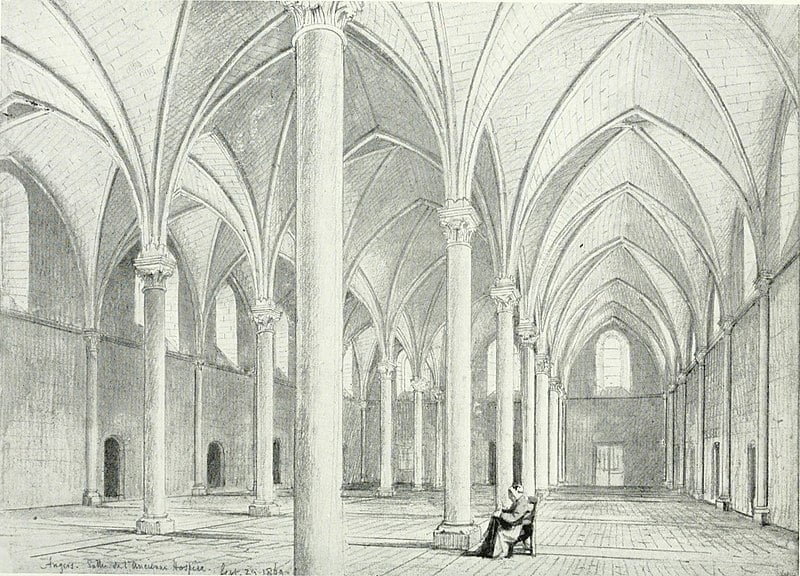
However, there was an unfortunate and unprecedented result of these high rib-vaulted ceilings supported by columns. Ultimately, they distributed the building weight down … and outward. To counter this, flying buttresses were introduced as another structural element in Gothic medieval castles.
4. Flying buttresses
Flying buttresses are one of the most integral parts of Gothic castle architecture. The advanced vaulting techniques of this era ensured that the walls sometimes projected their burden in an outward direction. However, it wasn’t true for all walls – only certain parts of it. So, architects came up with the perfect solution – instead of making the walls thicker and heavier, they would just provide them physical support from the outside. This is how the idea of flying buttresses was conceived.
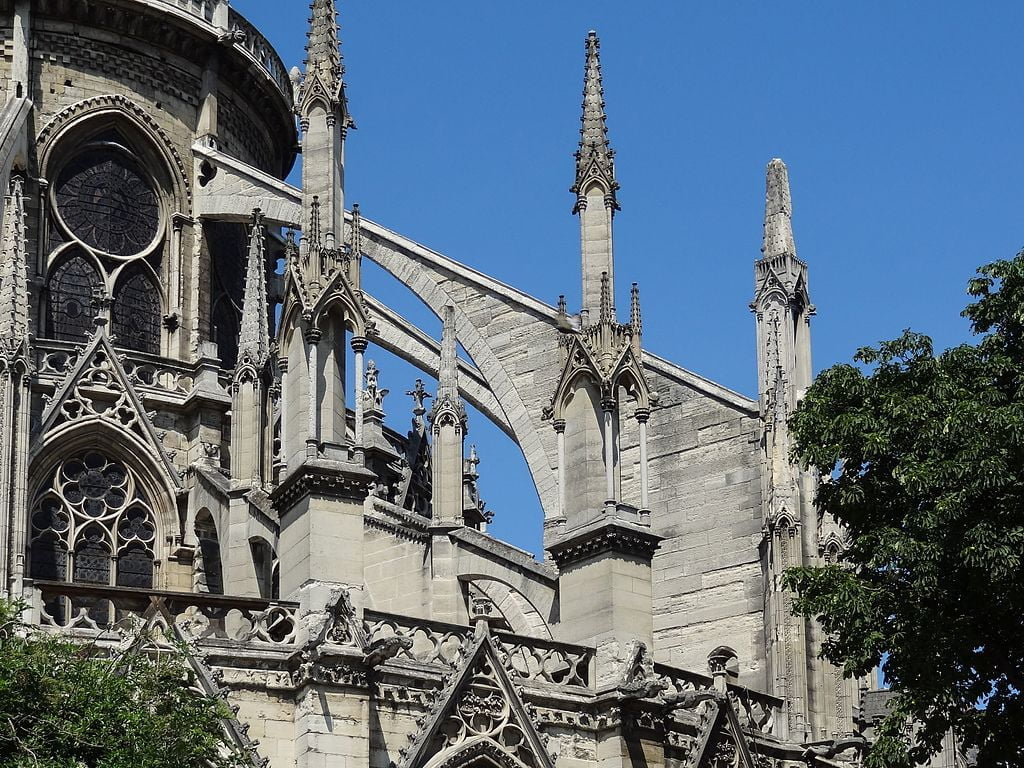
Basically, these buttresses supported the piers of the vaults from outside the building and they were only installed at the points where the walls were pushed out. It basically became an external skeleton that allowed Gothic engineers to create the tallest buildings of the medieval era. Another benefit of these buttresses was that they didn’t hinder the thinness of the walls, allowing architects to experiment with the facade with innovative window designs. Flying buttresses–often designed like highly-ornamented half arches–were the reason that Gothic buildings could achieve the soaring heights graced with natural light that we see today.
5. Gothic Windows
Since the ribbed vaulting in Gothic structures allowed the walls to be thinner, architects and designers went all out when it came to designing beautiful windows. In fact, the interiors of Gothic castles and churches are known for being incredibly bright and airy – not just because of their inherent tallness, but also because of their numerous windows.
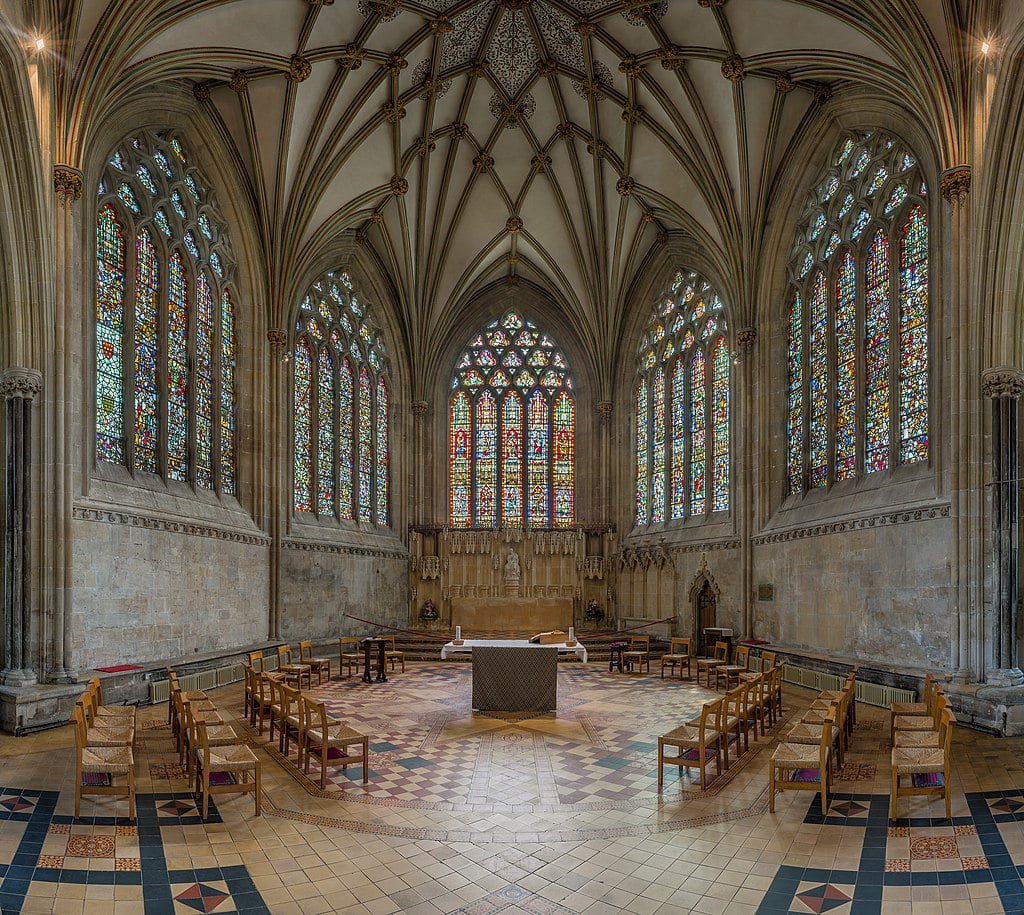
The most innovative part of window designing in Gothic medieval castles was the bar tracery. This technique was used to divide a large window into smaller sections with molded “ribs” that were made out of stone – just like modern wooden window frames. The glass was installed inside of this tracery, which became more and more elaborate as the Gothic movement gained momentum throughout the Medieval era. The most ornamental of these consisted of intricate geometric patterns with glass inlays or the reticulated tracery that looked like actual netting.
Stained glass was another Gothic architectural element, but it was mostly used in churches and cathedrals instead of actual castles. It featured colorful glass displays of various biblical paintings arranged inside the window tracery. The “rose window” design became quite iconic because of these stained glass stories, but once again, it was used in churches instead of castles.
6. Sculptures
Another prominent characteristic of Gothic medieval castles and churches was the numerous sculptures on the facades. From apostles, saints, and even Jesus Christ, to monstrous-looking gargoyles, grotesques, chimera, and even the Strix, there are so many sculptural details that you can see in Gothic buildings.
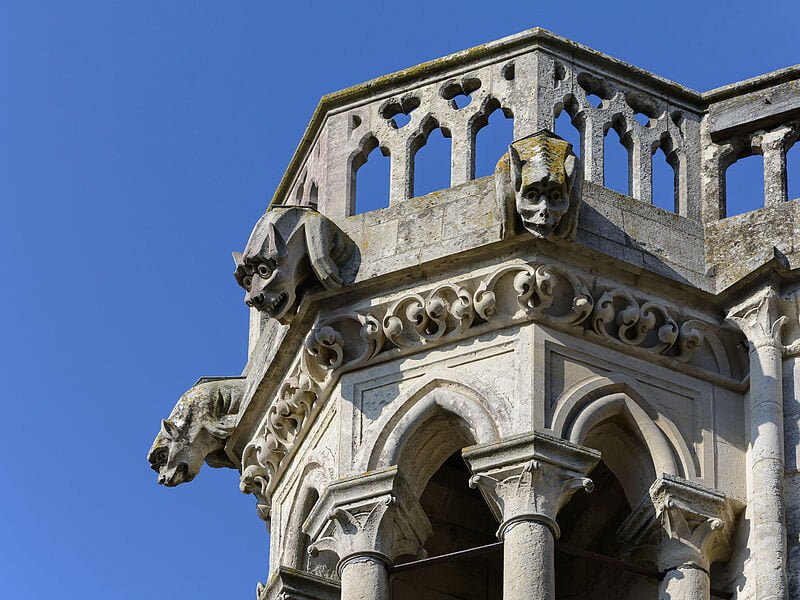
While the more religious ones were usually decorative features of Gothic cathedrals, the more disturbing pieces had two objectives. The first was to line the roof and battlements of Gothic medieval castles, with deliberately terrifying visuals in order to instill the fear of God amongst the onlookers. The second, particular to gargoyles, was a functional purpose: they acted as water sprouts that would chute out all the excess rainwater on the roof from their mouths. Nowadays, gargoyles and grotesques alike are frequently referenced as “gargoyles”.
7. Spires
No Gothic castle architecture worth its salt would be complete without the tall pinnacles and spires that are so characteristic of this style. Corvin Castle in Romania is an especially great example of a Gothic castle with spires and turrets. Not only did this element ramp up the drama effect, but also made the building’s skyline more interesting.

For designers, it was a structural challenge that they could surmount and for religious factions, it was just like a desire to touch Heaven from Earth. However, that’s just the metaphorical aspect of this element. In practical terms, many of these spires were used as bell towers. They were often used to summon the people for service or alert the residents of the castle to invaders.
Fun fact: it usually took a long period of time for these tall spires and pinnacles to be built, so they often stood out in contrast to the rest of the building.
Explore Medieval Times Deeper or Continue Reading…
From Churches to Castles – What Exactly Makes a Castle Gothic?
While the Gothic architecture was mostly incorporated in churches at the beginning, it started being used in castles as well. The elaborate ornamentation of this style clashed with the functionality of defense mechanisms, but designers managed to counter this hurdle by designing large, looming fortifications in Eastern Europe that also featured powerful defenses and served as stylish homes.
It was around the turn of the 20th century when Gothic literature (a la Dracula and Frankenstein) had a lot of impact on the popularity of Gothic castles. This led to a nostalgic, romantic reminiscence of this style being fashionable and extremely lavish. The castles designed in this era were less for military purposes and more to demonstrate the owner’s might.
Famous Gothic Castles
Now that we know what parameters the Gothic medieval castles are designed against, here are some of the most famous ones in Europe:
Burghausen Castle, Germany
Burghausen Castle is one of the finest examples of Germanic Gothic construction. Of course, it also enjoys the title of being the longest castle complex in the world. With its spired towers and travertine construction, it is one of the most massive strongholds in all of Germany.
It also served during the Napoleonic Wars, but today, it’s just a gorgeous tourist destination. The castle museum is also home to some amazing Gothic paintings, collected by past Bavarian ducal owners.
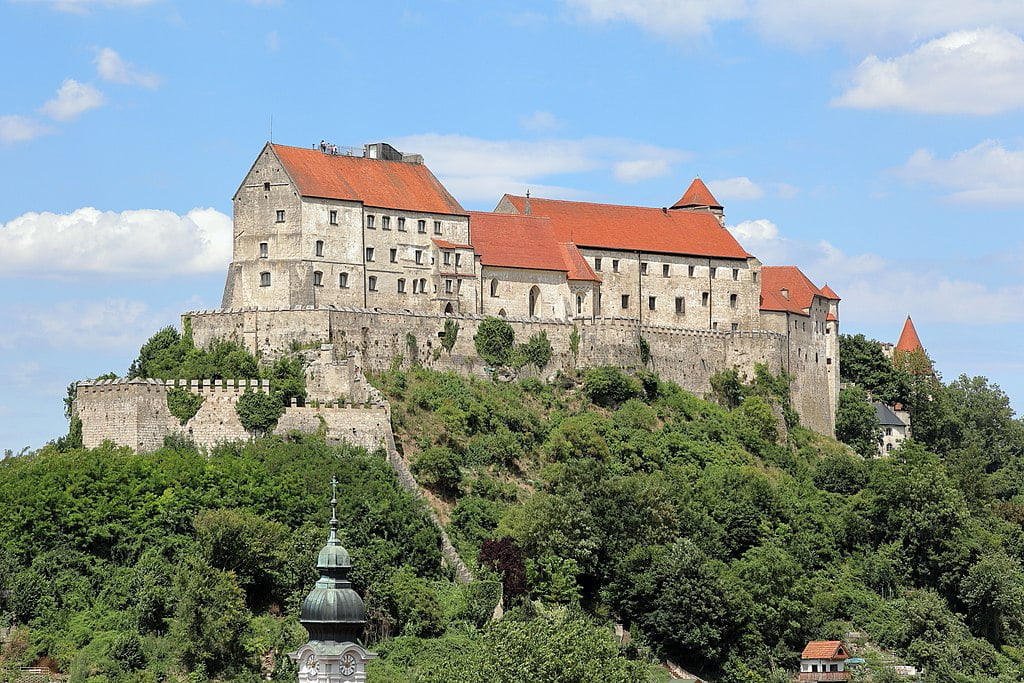
Bran Castle, Romania
This national monument from Romania is known for being the home of Dracula himself. (Although author Bram Stoker never actually visited the site in the first place.) It was originally constructed by the knights of the Teutonic Order and has a rich, culturally-significant history. It even served as a hospital during World War II.
As for its Gothic outlook, the castle makes for a nice, spired silhouette against its woody surroundings. From its stone masonry to conical truncated roofs with red tiles, it certainly showcases the gentle evolution of Medieval architecture from Romanesque to Gothic.
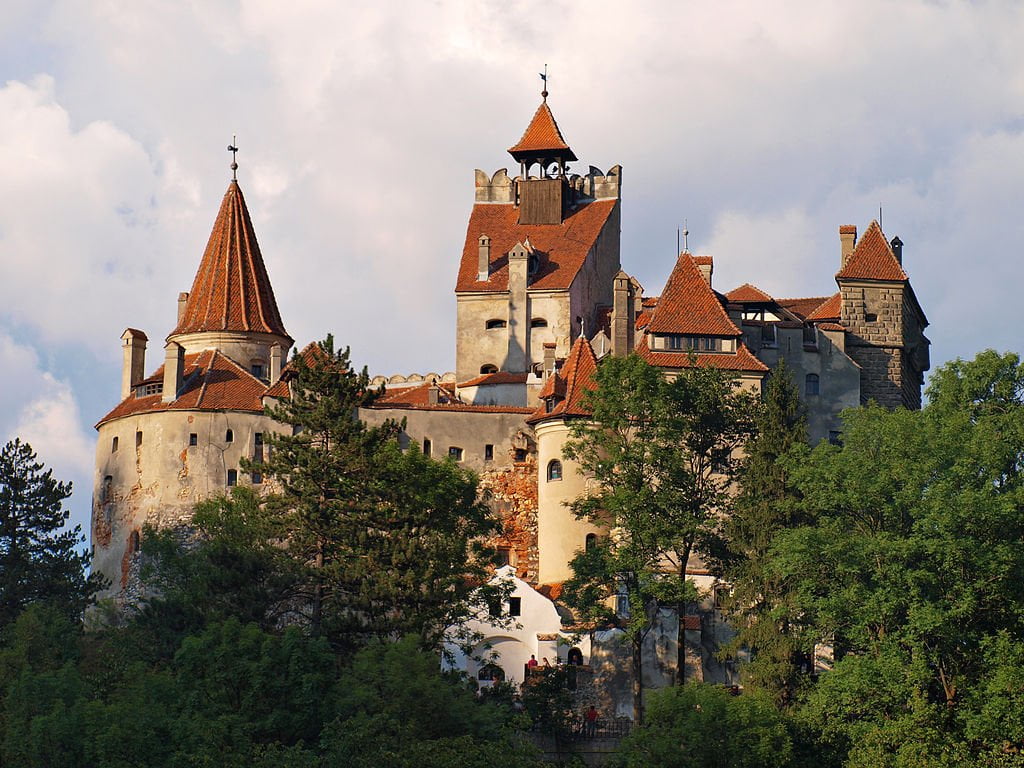
Karlstejn Castle, Czech Republic
First built by Charles IV, Holy Roman Emperor, Karlstejn Castle underwent a Gothic makeover in the late 15th century. However, it was later eclipsed by Renaissance detailing in another makeover in the 16th century. There was another reconstruction effort for this castle in the 19th century, which resulted in how it looks today.
However, one can still clearly see the Gothic influences in this medieval-era castle. From its tower houses to spires and subtle detailing, it certainly reminds one of what Gothic style becomes when it marries Modernism.
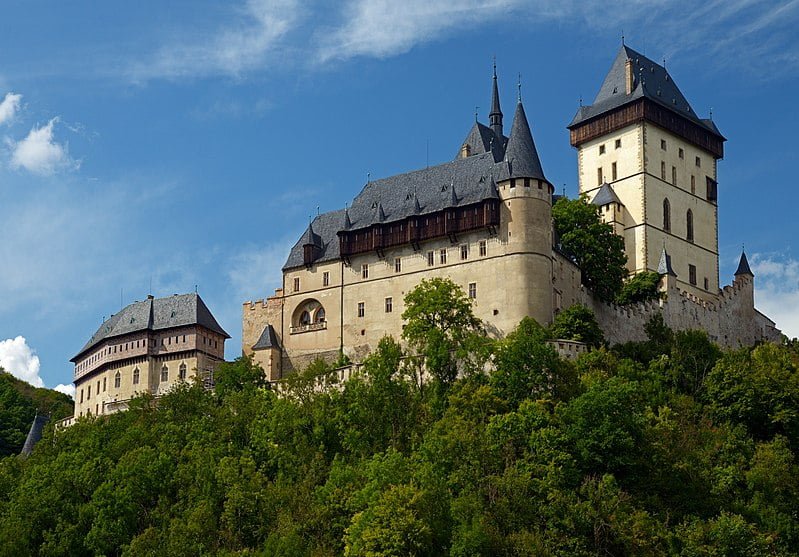
Corvin Castle, Romania
Also known as Hunyad Castle, after the Romanian military leader who constructed it, this one is not just a Gothic masterpiece, but has also got the gloomy, dark history down pat as well. It’s said to be where Vlad the Impaler was imprisoned after it served as the home of John Hunyad.
Today, the castle is considered one of the seven wonders of Romania. It also serves as a great example of Gothic medieval architecture. Its ornate arches with bar tracery and tall spires create a truly atmospheric experience for all those who visit.
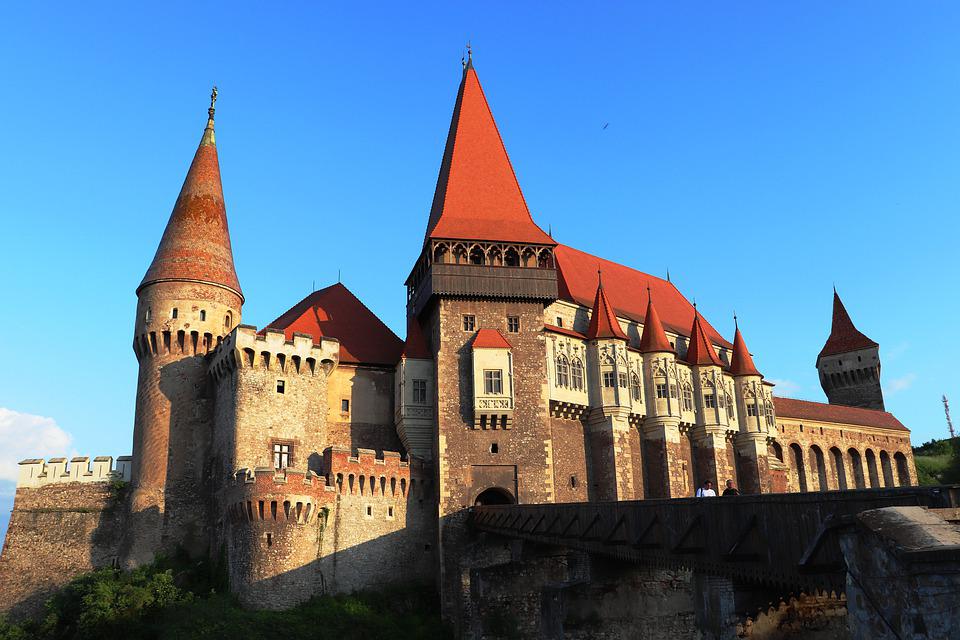
Château de Chambord, France
Chateau de Chambord is one of the most influential Gothic castles in France. (Being located in the birthplace of Gothic architecture might have given it an edge.) Originally a hunting lodge that was renovated to become a castle, Chambord has been through a lot throughout history. From being stripped during the French Revolution to being used as a Field Hospital, it has been repurposed repeatedly.
However, through it all, it has managed to retain its regal elegance as a Gothic medieval castle. Its decorative spires and stunningly detailed ornamentation make it instantly recognizable as something from the Gothic family.
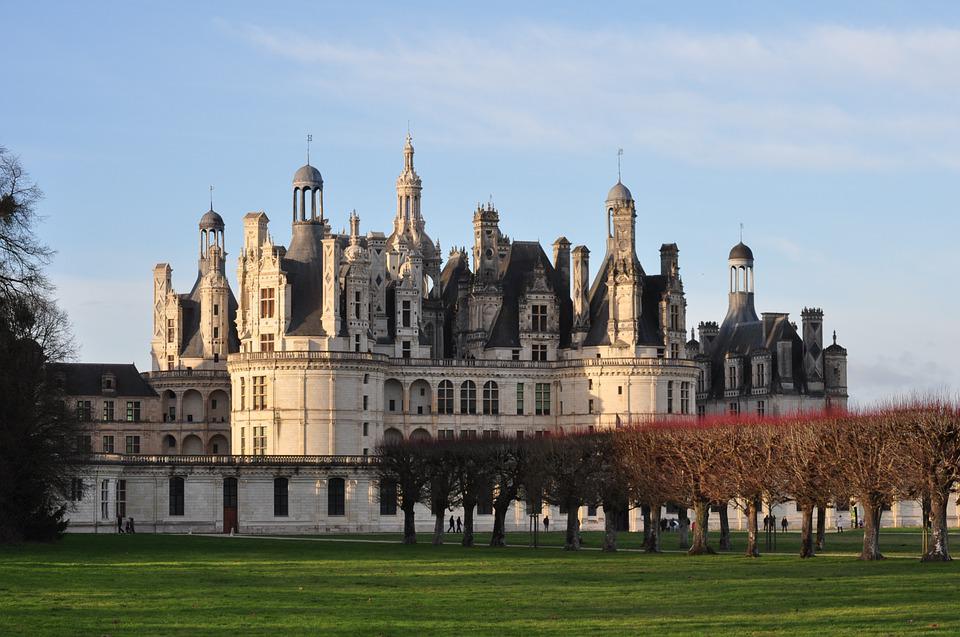
Frequently Asked Questions (FAQs)
What are the three basic elements of the Gothic style?
A: The three basic elements of the Gothic style are the pointed arches, the flying buttresses, and the ribbed vaults. Together, this trifecta makes for the most recognizable characteristics of Gothic medieval castles and churches.
Are Medieval and Gothic the same?
A: Gothic art and architecture was a movement that began in the Medieval era. Medieval itself is a broad term that encompasses the Romanesque style as well. The Medieval age was later taken over by the Renaissance era, which appreciated symmetry and classical design elements.
Do Gothic castles exist in these days?
A: Yes, Gothic castles do exist. In fact, there are quite a few of them across Europe: from Germany, Italy, and France to Estonia and Poland–even England and Wales in the UK feature some Medieval Gothic castles.
Where are the most Gothic castles?
A: Although spread out through the entirety of Europe, there are quite a few Gothic medieval castles in Romania. From Peles to Corvin and Bran Castles, this country seems to have been quite inspired by this movement.
Why is Gothic called Gothic?
A: The term “Gothic” was coined after the “barbaric” Goth tribes of Eastern Europe. They had been a major influence on the fall of the Western Roman Empire. It was intended as a slur against the architecture style that displaced Romanesque (Rome-derived) architectural concepts in a similar fashion.

